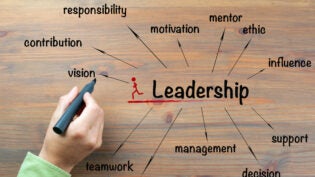
Many small business owners don’t think they have time to effectively evaluate and develop their employees, but this is fatally flawed thinking. Understanding the talent of the people on your team not only allows you to effectively determine who is your next rock star, and who may need to be escorted out but most importantly provides you a framework for building on their strengths so they can deliver more value towards the business’ success.
Skip the Review
The first step in growing your talent is to properly assess them. Most organizations will do this via a performance review process. Unfortunately, performance reviews are being seen, more and more, as a waste of time that benefits neither the employee nor employer. No one feels good about doing them or receiving them and the information gathered is typically put away in a file drawer until the next year’s review.
Large companies like Dell, Microsoft and even General Electric, which in some ways started the traditional performance review process, are doing away with them and smaller companies are following suit. A great summarizing statement about the value of performance reviews was uttered by a manager at the consulting firm Deloitte, “an investment of 1.8 million hours across the firm didn’t fit our business needs anymore.”
To think of a new and fresh way to how we best use our people is to begin thinking of this process as one where we want to find a way to develop the skills (a leading indicator) necessary for business success rather than a review (lagging indicator) of what the person did last year. The real question is how we can develop our people, so they are stronger in their role. What if, as an added bonus, we could make this process less painful a bit more enjoyable and even which strengthens the boss-employee role?
Behavior is the New Metric
When you consider approaches to assessing talent such as single manager reviews (performance reviews, testing centers, or even multi-rater assessments such as a 360), all of them miss key elements, mostly because they are not driven by the question of what skills does that person need to best do their job. Instead of rating an individual, lets consider evaluating their talent in a process we refer to as a “Talent Review.”
Effective talents reviews bring together groups of leaders to discuss their team members in a structured, facilitated manner. The discussions are best facilitated and are interactive. They are not about a single manager advocating for his or her employee but instead engages all managers to share their observations about what they have seen the employee do and achieve (or where they have missed opportunities) and how their actions have impacted the business strategy and results.
When we conduct these as part of our leadership development program, managers are specifically asked not to prepare anything ahead of the discussion. This allows everyone to focus on behavioral descriptions of people’s behaviors (which are modifiable) rather than personality factors (which are not). Behaviors are the gateway to leadership success, not a score on a Myers Briggs or Predictive Index.
We’re looking to discuss two key elements, performance effectiveness over time and growth potential. Performance effectiveness is more than just how well they do in their job. It also includes concepts such as how effectively they contribute to the success of others and how aligned they are to the organization’s mission and strategy.
Growth potential looks at how capable they are to assume greater roles and responsibilities and also includes a concept referred to as “learning agility” which examines how well the individual learns from their past experiences and applies that knowledge in new situations and their personal aspiration for more role and scope.
The true outcome goal of the talent review process is to identify the development strategies that are most effective for any particular leader and have the greatest potential for that leader to advance and make a meaningful contribution to the organization.
The talent review process is just the first step in growing the leadership cadre in your organization. Understanding what you have is the vitally important first step that then allows you to take the action needed to develop team members.
2077 Views












